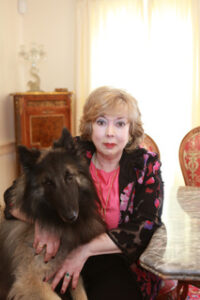Today I’m welcoming Arlene Kay, a Level Best Books author, to my blog to talk about her latest mystery and her love affair with bad guys! Welcome, Arlene…
 Mystery writers populate books with an array of suspects who may or may not be the culprit. Creating heroes is easy—anyone can recite a litany of virtues that describe the good guy (or gal). As a voracious reader, I find that far too many novelists craft lead characters who are just plain BORING and murderers who are far too obvious. It’s more intriguing if both the protagonist and the antagonist have flaws that may well lead them to commit heinous acts or pursue the wrong path. Recall that even the great Holmes was often testy, and he did have a fondness for the 7% solution. Moriarty on the other hand exuded evil but he was a brilliant strategist and worthy opponent. Both suffered from a galloping case of hubris. More contemporary heroes like Lee Child’s Jack Reacher blend a compelling quest for justice with a whopping dose of vengeance. Nelson DeMille’s John Corey is a relentless scamp without a whiff of political correctness in his bones.
Mystery writers populate books with an array of suspects who may or may not be the culprit. Creating heroes is easy—anyone can recite a litany of virtues that describe the good guy (or gal). As a voracious reader, I find that far too many novelists craft lead characters who are just plain BORING and murderers who are far too obvious. It’s more intriguing if both the protagonist and the antagonist have flaws that may well lead them to commit heinous acts or pursue the wrong path. Recall that even the great Holmes was often testy, and he did have a fondness for the 7% solution. Moriarty on the other hand exuded evil but he was a brilliant strategist and worthy opponent. Both suffered from a galloping case of hubris. More contemporary heroes like Lee Child’s Jack Reacher blend a compelling quest for justice with a whopping dose of vengeance. Nelson DeMille’s John Corey is a relentless scamp without a whiff of political correctness in his bones.
I take pleasure in crafting villains who both attract and repulse readers. They are often witty, erudite, and kind to animals. They frequently have a commanding physical presence that makes them quite irresistible to others. Of course, keep in mind that they have the unfortunate habit of ruthlessly dispatching anyone in their path if the need arises. Readers sometimes complain that they really liked many of my killers and never suspected them of committing the crime. That’s the point! Mystery writers must cloak the villain in sheep’s clothing, giving him/her a veneer of normality that lulls readers into a sense of complacency. I confess that sometimes
even I secretly root for my villains and rue the day of reckoning that they must inevitably face. The great Agatha Christie stumped us all by creating very common place citizens who were blackguards. (Recall, “The Murder of Roger Ackroyd” one of her best). Miss Marple was never misled by appearances. She knew that evil existed everywhere and seldom believed anyone.
After someone has read one of my mysteries, I delight in asking if he/she solved the murder.
Usually the answer is no, despite the many clues I sprinkle throughout the narrative. Veteran
mystery buffs are the exception to that rule since they like Miss Marple are seldom fooled. In
my latest release, THE MASCARA MURDERs you will once again find a complex set of suspects
one of whom is an unrepentant killer. I defy you to unmask the murderer before my
protagonist does!
From hero to zero in 12 months! The daring exploits of Marketta Davis cosmetic guru, failed artist, and occasional sleuth have faded into obscurity along with her hopes for romance with a dashing prosecutor. To revive her niece’s flagging spirits, wily Aunt Violet suggests a change of pace, a summer post at a posh Michigan prep school. Marky’s assignment comes with a challenge–investigate the murder of teacher and social justice warrior Tori Aaron, a beloved protégé of Violet’s. As she acclimates herself to Sherborn School, Marky finds that both fellow teachers and students harbor dark secrets. Most elusive of all is the character of the victim, Tori Aaron, a woman who inspired both love and loathing in those around her.
Find her author page on Facebook here: https://www.facebook.com/arlene.kay1
Find her personal page on Facebook here: https://www.facebook.com/arlene.kay1
Find Arlene on Twitter here: https://twitter.com/Arlenekay1



Great post. I too prefer complex characters. It gives them room to grow over the course of a book or a series.
Good point, Lori. And complex villains or protagonists make it all the more interesting to read.
This post on writing villains really got me thinking about mine, Susan. I’m in the midst of writing a female villain I want the readers (and perhaps my male POV character, too) to admire greatly. I’m trying to write it where the female POV character sees right through this mesmerizing female villain’s, as you describe it, ‘wolf in sheep’s clothing.’ After reading this post, I yearn to accomplish this even more. Thank you.
Thanks for checking out Arlene’s post, Pamela. I agree with you, and it is all the more difficult if the POV character sees through the villain but no one else believes her. I’ve had times in my real, non-fictional life where that happened. It’s not a comfortable position for your POV character, so that makes it great because you can pile it on her.